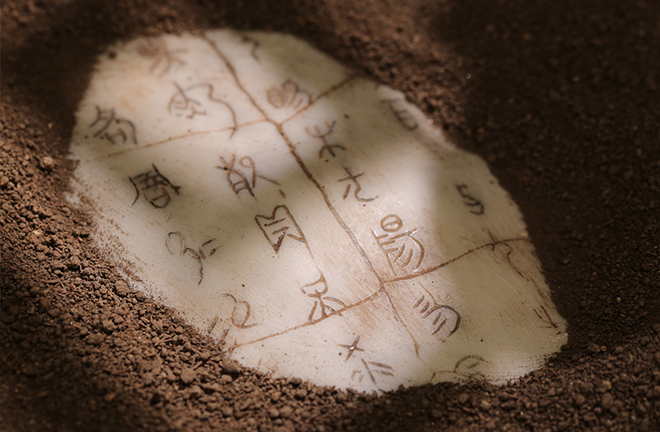Symposium showcases latest developments in oracle bone studies

Oracle bone inscriptions Photo: TUCHONG
From July 27 to 28, an international symposium to commemorate the 125th anniversary of the discovery of oracle bone inscriptions was convened in Ji’nan, east China’s Shandong Province. Scholars gathered to exchange insights on deciphering the ancient characters, presenting the latest advancements in the field.
This year also marks the 70th anniversary of both the establishment of the Institute of Ancient History at the Chinese Academy of Social Sciences (CASS) and the founding of the Shandong Museum. Renowned for their extensive collections of oracle bones unearthed from the Yinxu Site in central China’s Henan Province, these institutions have stood at the forefront of oracle bone research since the founding of the PRC in 1949.
The Shandong Museum houses a total of 10,588 oracle bone fragments. Systematic organization of these relics represents a long-cherished aspiration within academia. In 2013, the Institute of Ancient History at CASS once again collaborated with the Shandong Museum on a major project sponsored by the National Social Science Fund of China, focusing on the sorting and study of oracle bone scripts treasured by the Shandong Museum. Results from this project are scheduled to be published soon.
In recent years, paleography has flourished across China, with significant advancements in the study of oracle bone inscriptions. Progress has been made particularly in the secondary development and re-cataloguing of existing materials, as well as the integration of artificial intelligence technologies. The Jilin University collection of oracle bone inscriptions, overseen by Wu Zhenwu, a professor at Jilin University and president of the Chinese Ancient Characters Research Association, introduced a revised cataloging system. This edition is now one of the most comprehensive in oracle bone literature, reflecting a more detailed and enhanced approach to documenting these ancient texts.
Today, global academia has reached a consensus that oracle bones originated in China, which is also the epicenter of oracle bone studies. Scholars, including CASS Member Song Zhenhao, have advocated for a collaborative effort both domestically and internationally to implement the plan for digitally restoring oracle bones worldwide, as well as returning oracle bone scripts back to their “home” with the assistance of big data.
Through efforts made by generations of scholars, nearly 4,400 individual characters have been identified on oracle bones, with around 1,700 of them having been deciphered. Liu Yuan, director of the research center on oracle bone inscriptions and the history of the Shang Dynasty (c. 16th century-11th century BCE) at CASS, told CSST that papers submitted to this symposium represented the highest level of oracle bone studies. When identifying, analyzing, and interpreting confusing characters and phrases, scholars in attendance enhanced the accuracy of their interpretations using advanced techniques, including joining, scraping, and specialized carving methods, in addition to traditional morphological and phonological analyses.
Oracle bone inscriptions are valuable resources for exploring the history of the Shang Dynasty, and conducive to studies of ancient Chinese civilization. Wu Wenling, deputy director of the Institute of Ancient History at CASS, noted that the conference not only contributed new theories and methodologies to oracle bone studies, but also deepened research on the histories of the Shang Dynasty and the pre-Qin era (prior to 221 BCE).
The symposium was co-hosted by the Institute of Ancient History at CASS, the research center on oracle bone inscriptions and the history of the Shang Dynasty at CASS, and the Shandong Museum.
Edited by CHEN MIRONG
